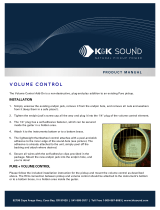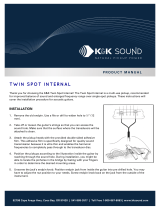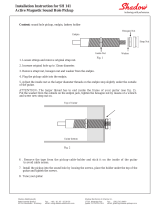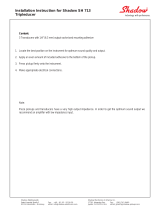
10
2. Apply an adhesive pad to the shiny brass face of the transducer and mount
outside the instrument, at the location indicated in step 1. The transducer wire
should follow the grain of the soundboard and point toward the bottom of the
instrument.
3. Plug the pickup into an amplifi er and experiment with the vertical location of
the transducer. If you detect boominess or feedback, relocate the transducer
higher up on the soundboard. In no case should it be necessary to mount it
higher than ½ the distance. Use increments of about 3 inches.
Caution: Removal for relocation should be performed by gently sliding a thin
plastic credit card between the transducer and the soundboard.
4. Once you have found the “sweet spot” for the pickup, mount it at the same
spot inside the instrument.
5. Plug the instrument into an amplifi er. If boominess or feedback occurs, relo-
cate the transducer as detailed above.
6. Remove the protective fi lm from the bottom of the jack holder and mount the
holder in a convenient location. We recommend a location on the base of the
instrument, if possible. We do not recommend mounting to the soundboard.

















